Birdfinding.info ⇒ Common and easy to find across most of Puerto Rico. Most numerous in mountains and foothills, as at Maricao State Forest and El Yunque National Forest. Within San Juan, Julio Enrique Monagas National Park is a likely place for it.
Puerto Rican Spindalis
Spindalis portoricensis
Endemic to Puerto Rico, where it is found at all elevations throughout the island in a wide variety of wooded and semiopen habitats from coastal scrub to montane forests. Most numerous in the mountains. Also occurs in settled areas, both rural and urban, including metropolitan San Juan.
Identification
Male is unmistakable: its striking black-and-white head pattern, orange nape, and yellow-to-orange breast are unique in its range.
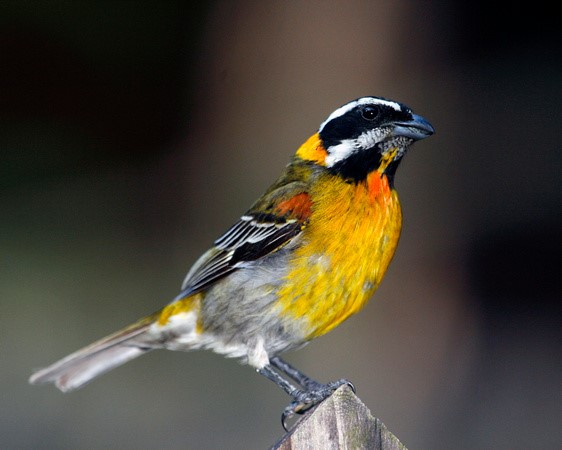
Puerto Rican Spindalis, male. (Loiza, Puerto Rico; March 29, 2008.) © Alfredo Colón

Puerto Rican Spindalis, male. (Puerto Rico; October 3, 2005.) © Alfredo Colón
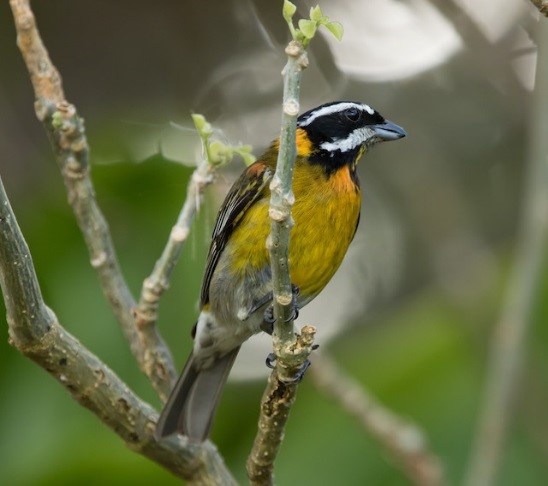
Puerto Rican Spindalis, male. (Rancho Vegas, Cayey, Puerto Rico; March 19, 2017.) © José Santiago
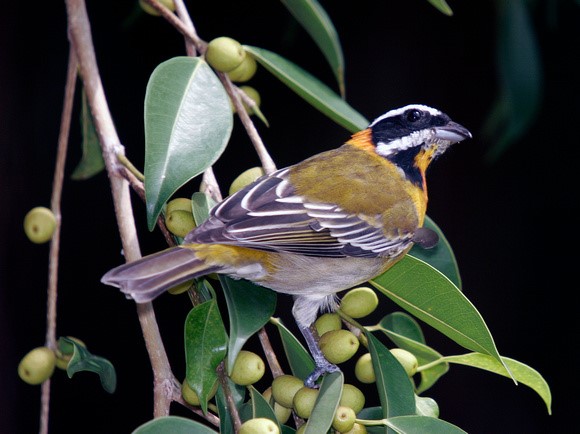
Puerto Rican Spindalis, male. (Puerto Rico; January 15, 2006.) © Alfredo Colón

Puerto Rican Spindalis, male. (Puerto Rico; January 15, 2006.) © Alfredo Colón

Puerto Rican Spindalis, male. (Puerto Rico; December 15, 2006.) © Alfredo Colón

Puerto Rican Spindalis, male. (Barrio Naranjo, Comerío, Puerto Rico; September 4, 2012.) © Ernesto Burgos

Puerto Rican Spindalis, male. (Loiza, Puerto Rico; March 29, 2008.) © Alfredo Colón

Puerto Rican Spindalis, male. (Barrio Naranjo, Comerío, Puerto Rico; February 13, 2009.) © Ernesto Burgos
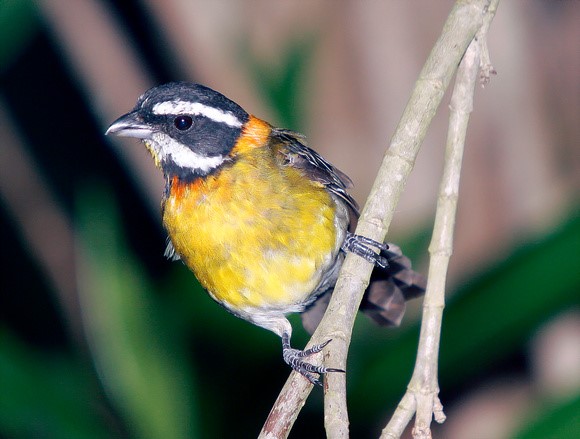
Puerto Rican Spindalis, male. (Puerto Rico; July 1, 2006.) © Alfredo Colón
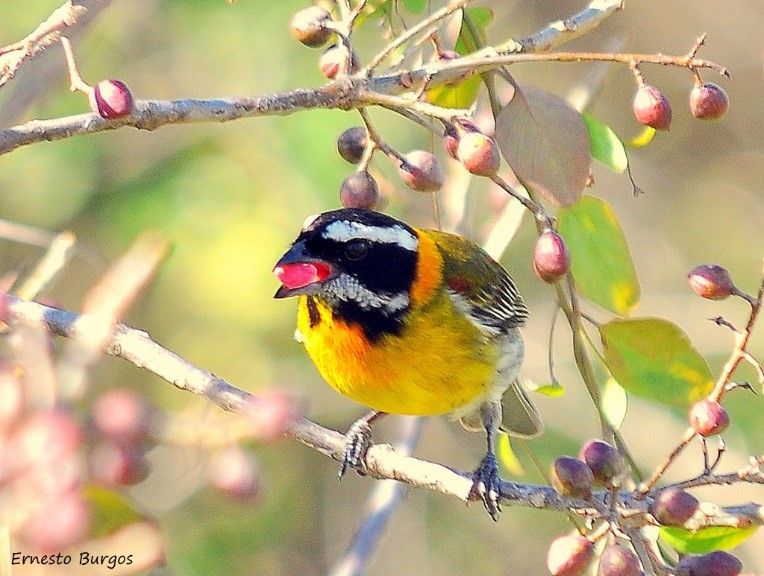
Puerto Rican Spindalis, male. (Aguirre State Forest, Puerto Rico; February 10, 2013.) © Ernesto Burgos
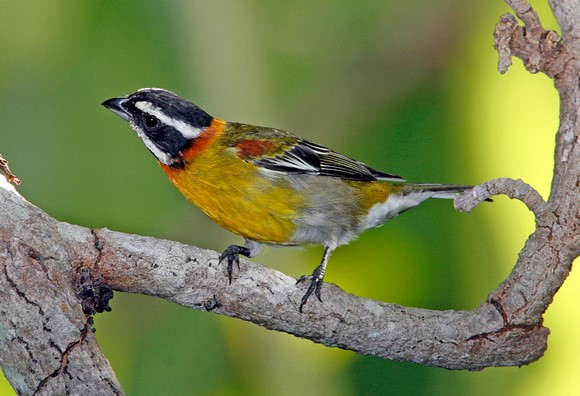
Puerto Rican Spindalis, male. (Puerto Rico; August 29, 2008.) © Alfredo Colón
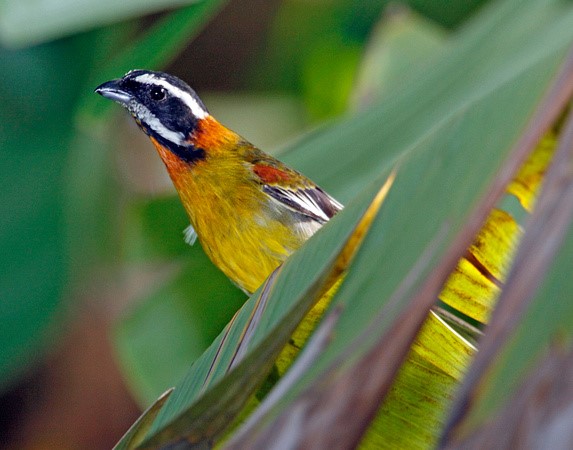
Puerto Rican Spindalis, male. (Puerto Rico; August 29, 2008.) © Alfredo Colón

Puerto Rican Spindalis, male. (Puerto Rico; May 3, 2006.) © Alfredo Colón

Puerto Rican Spindalis, male. (Barrio Naranjo, Comerío, Puerto Rico; September 4, 2012.) © Ernesto Burgos
Female is olive-brown above, with a muted version of the male’s head pattern, and pale, lightly streaked underparts.
Immatures generally resemble females, but with greater variability in the tones of their plumage.
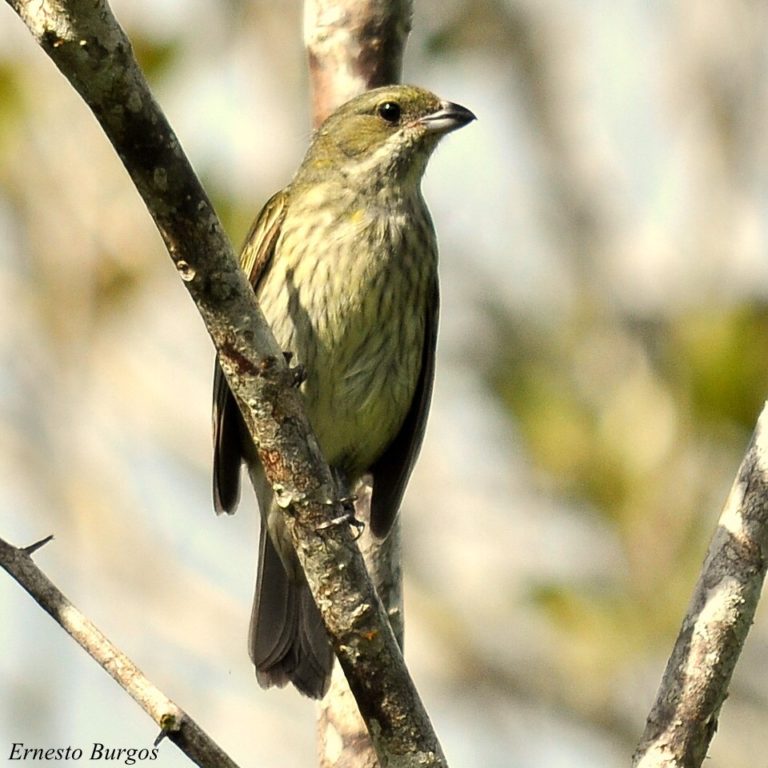
Puerto Rican Spindalis, female. (Barrio Naranjo, Comerío, Puerto Rico; April 22, 2009.) © Ernesto Burgos

Puerto Rican Spindalis, immature male. (Barrio Naranjo, Comerío, Puerto Rico; May 13, 2013.) © Ernesto Burgos

Puerto Rican Spindalis, immature. (Aguirre State Forest, Puerto Rico; February 10, 2013.) © Ernesto Burgos
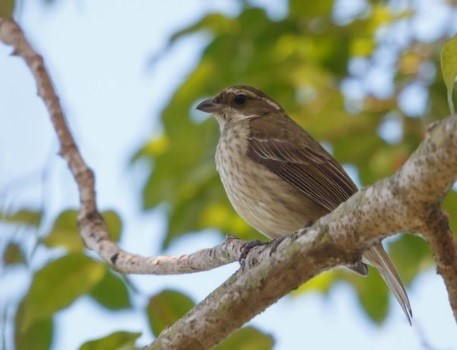
Puerto Rican Spindalis, female. (Parque Luis Muñoz Rivera, San Juan, Puerto Rico; February 13, 2016.) © Simon Best
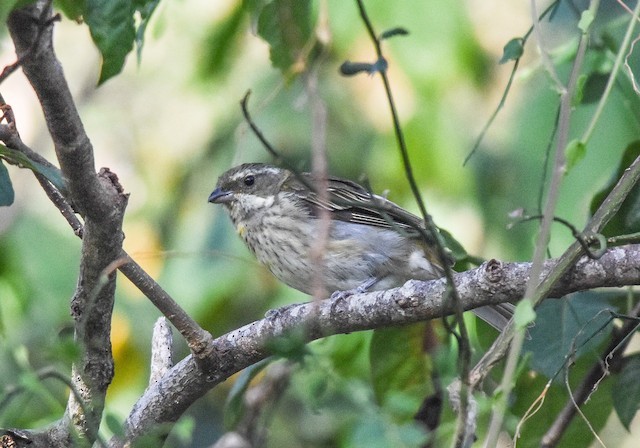
Puerto Rican Spindalis, female or immature. (Maricao State Forest, Puerto Rico; May 18, 2015.) © Daniele Mitchell
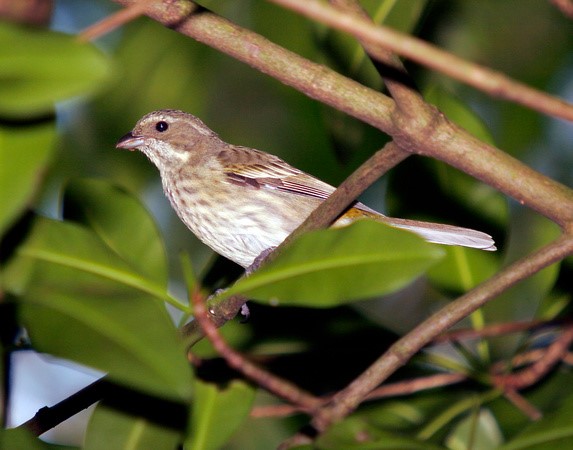
Puerto Rican Spindalis, immature. (Puerto Rico; October 25, 2005.) © Alfredo Colón
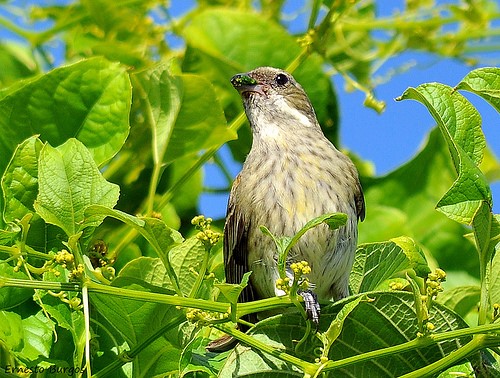
Puerto Rican Spindalis, immature. (Aguirre State Forest, Puerto Rico; February 10, 2013.) © Ernesto Burgos
Voice. Typical song consists of a distinctive three-note phrase of high-pitched whistles, usually preceded by an introductory whistle and ending mid-phrase: e.g., zeeee, zip’ee-zip, zip’ee-zip, zip’ee-zip, zip’ee. The length of the song and precise arrangement varies:Calls are high-pitched twitters and single notes:
Notes
Monotypic species. All spindalises were formerly considered to comprise a single species, the Stripe-headed Tanager, S. zena.
References
eBird. 2018. eBird: An online database of bird distribution and abundance. Cornell Lab of Ornithology, Ithaca, N.Y. http://www.ebird.org. (Accessed October 9, 2018.)
Raffaele, H. 1989. A Guide to the Birds of Puerto Rico and the Virgin Islands. Princeton University Press, Princeton, N.J.
Raffaele, H., J. Wiley, O. Garrido, A. Keith, and J. Raffaele. 1998. A Guide to the Birds of the West Indies. Princeton University Press, Princeton, N.J.
